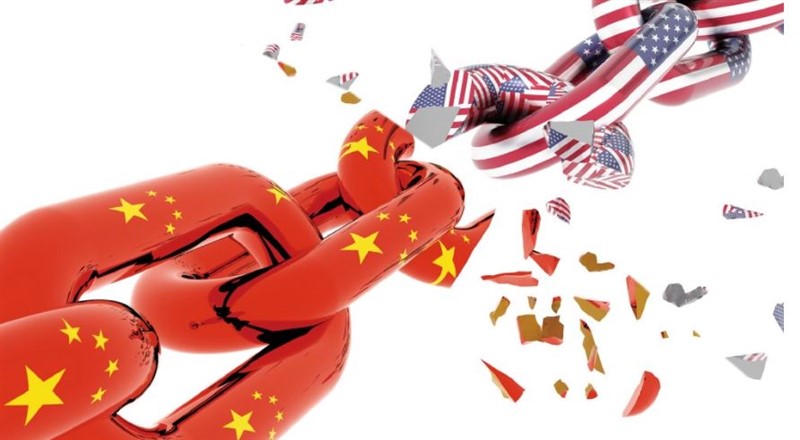Banker's Digest
2021.12
Financial Decoupling is an Important Threat

Chief Economist for Asia Pacific at NATIXIS and Senior Advisor to TABF Beyond trade and technology, US containment has also moved into finance. To start, US financial sanctions on China are now in place as the Biden administration finally passed the Trump-era list of military related Chinese companies banned from receiving US-based investment. China’s response with the Anti Foreign Sanction Law (AFSL) and forcing Chinese companies to delist from the US on the grounds of unwarranted data sharing is further pushing towards financial decoupling. The reality is that financial linkages have been waning for years, at least as FDI flows are concerned . US FDI flows into China peaked in 2002 after China’s entry into the WTO but have been coming down since. In the same way, Chinese FDI into the US grew until 2016 and has remained rather stagnant since President Trump came to power. Portfolio flows, though, are a different story. While China’s holdings of US treasuries are clearly on an downward trends, US holdings of Chinese assets have increased very rapidly, notwithstanding the US sanctions on same specific names. Still, the web of US sanctions is becoming increasingly complex, as well as the risk of China’s countersanctions, not only onshore but even in Hong Kong. Some are Xinjiang or Hong Kong related but the most important ones are the Pentagon list of Chinese military companies via the Office of Foreign Assets Control (OFAC) for which an investment ban for US investors is in place. These are by now about 60 companies, some of which of very relevant size like ChemChina or Xiaomi. China’ retaliation, namely the anti-foreign sanctions law passed in June 2021, could increase the costs for foreign firms operating in China and thus further deter investment flows. Such costs may stem from additional compliance-related costs but also reputational ones if the perception exists that companies are too dependent on China. Moving to cross-border financing, it has clearly become more difficult. For example, many of the Chinese technology firms listed in the US have opted for secondary listings to avoid the risk of being delisted from the US stock market. This is the case of Alibaba Group, JD.com, Baidu and NetEase Inc. In the meantime, the Chinese government has adopted policies to encourage the domestic funding of technology companies, including the launch in 2019 of the Science and Technology Innovation Board (SSE STAR Market). Based in Shanghai, the STAR Market has the objective of supporting promising technology start-ups in their equity financing, helping avoid US equity markets. As if this were not enough, the Chinese government is also resorting to penalizing Chinese listings in the US market, as Didi’s case shows. Beyond the specific retaliation measures, China’s grand strategy to respond to financial bifurcation is for the RMB to eventually become an international currency. This used to be a long term objective but it has become more urgent as a consequence of the US’ extraterritorial use of the US dollar to target China. The fact that RMB only captures a tiny share in either global payments or reserve currency, roughly 2%, adds to the urgency. The first attempt by China to internationalize the RMB was centered on facilitating Hong Kong as the global hub for offshore RMB business, then extended to other offshore centers, which did not work out well after the 2015 Chinese equity and currency shocks. Now China is trying again by fostering cross-border acceptance of its digital currency, profiting from a first-mover advantage. This is not only important in the long run but also immediately as it can help China bypass the use of the dollar when and if needed. But the internationalization of a currency needs more than just technical preparations. It also requires certain conditions to be fulfilled for its global acceptance, namely preserving its value through price stability, offering a large pool of highly liquid assets, and allowing full capital account convertibility for money to instantly flow in and out of RMB. This means that the Chinese government will need to take additional steps toward the liberalization of the capital account so as to enhance the full convertibility of the RMB. A key question is whether the digital renminbi, the E-CNY, may help Chinese authorities to square the circle, namely to allow for more capital account openness while still being able to trace capital flows and act accordingly. This explains why E-CNY’s traceability under the design of “controlled anonymity” is key, as it allows China to control seemingly free financial flows. In other words, the digital currency could offer a way to promote RMB as an international currency, while still keeping control of cross-border flows. However, the technical barrier for a cross-ledger solution and the institutional differences make it easier said than done. Data sharing of financial transactions is also an important stumbling block. Another important factor that needs to be improved is the liquidity of RMB financial assets. While the size of the bond market has grown rapidly since the global financial crisis, it is dominated by corporate and FI credit. More liquidity on central government paper is needed with a longer yield curve and clearer benchmarks. But whether the E-CNY can help on this front remains a question. All in all there are important forces pushing for financial decoupling. From the US side, containment is taking place through imposing sanctions but also making it harder for Chinese companies to list in the US and/or buy US companies. China, on the other hand, is well aware or the dollar’s might as global reserve currency and it is attempting to by-pass it by internationalizing the RMB as fast as possible through the use of the RMB digital currency. The real question is whether this attempt can be successful without fully opening the capital account.



